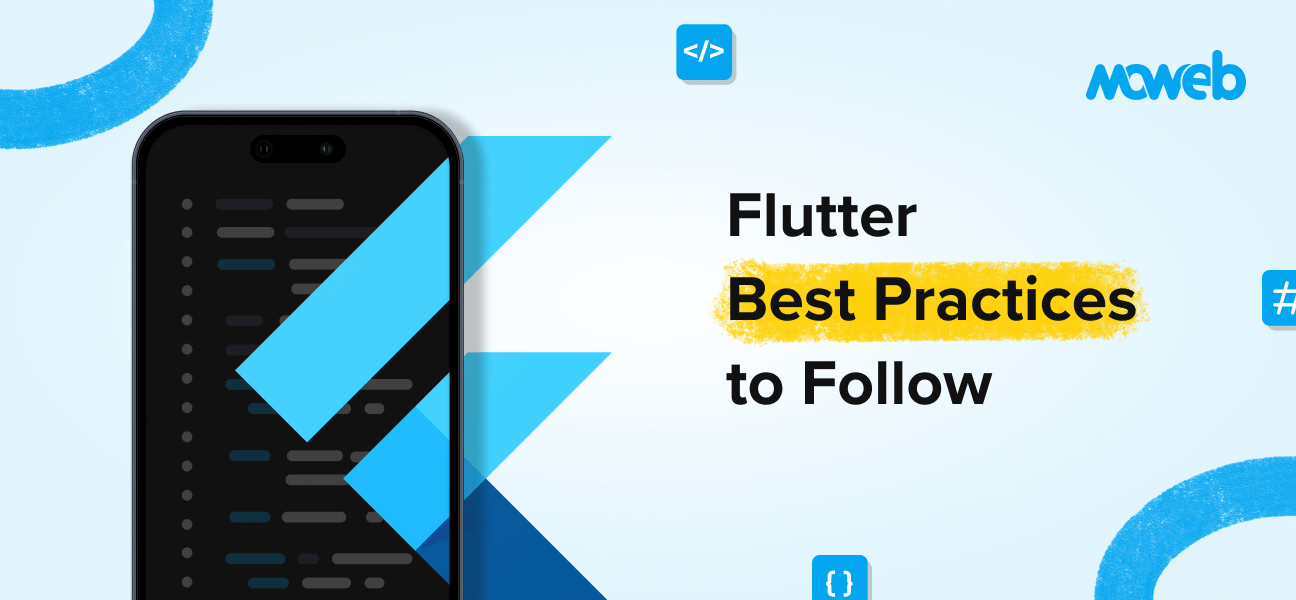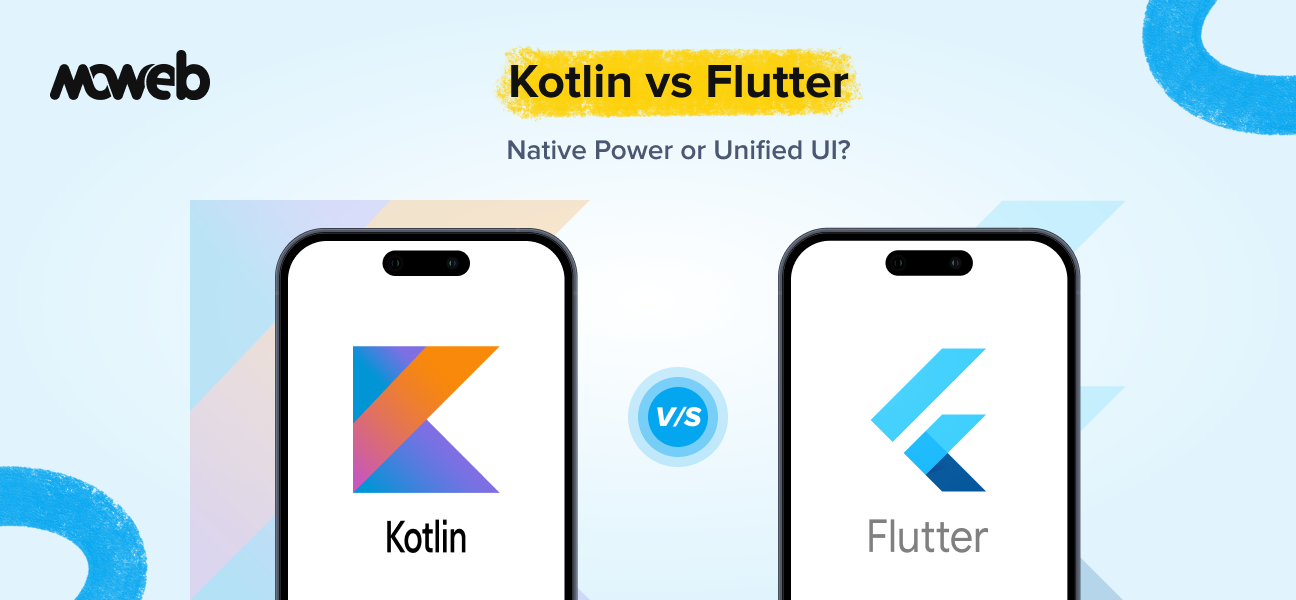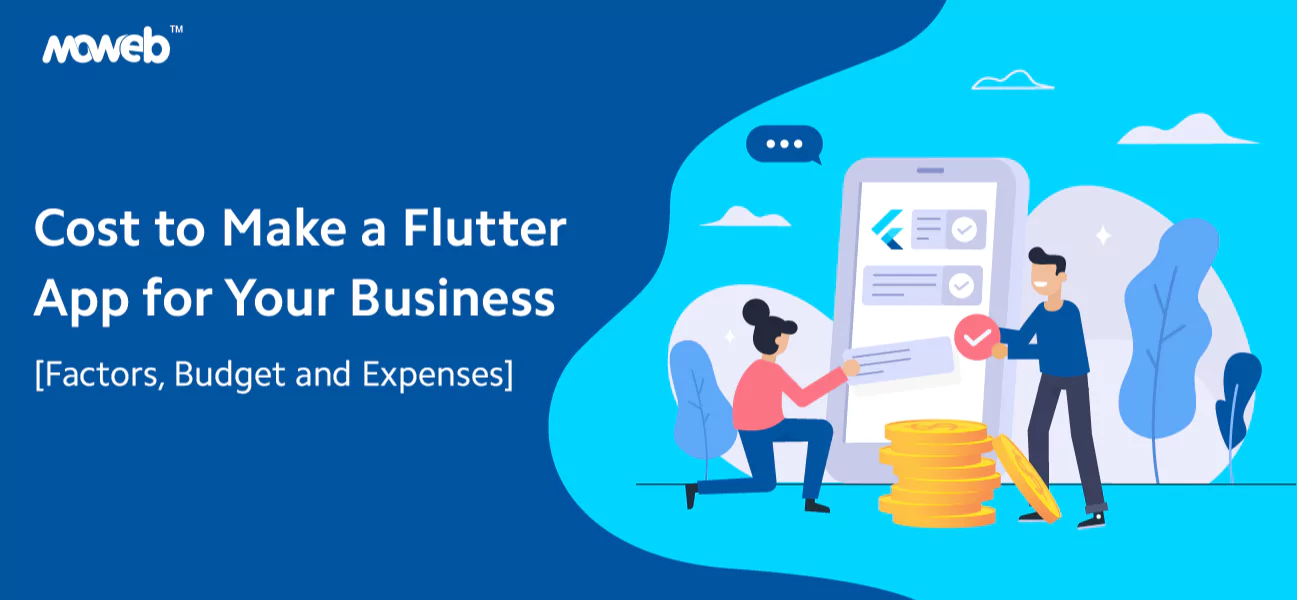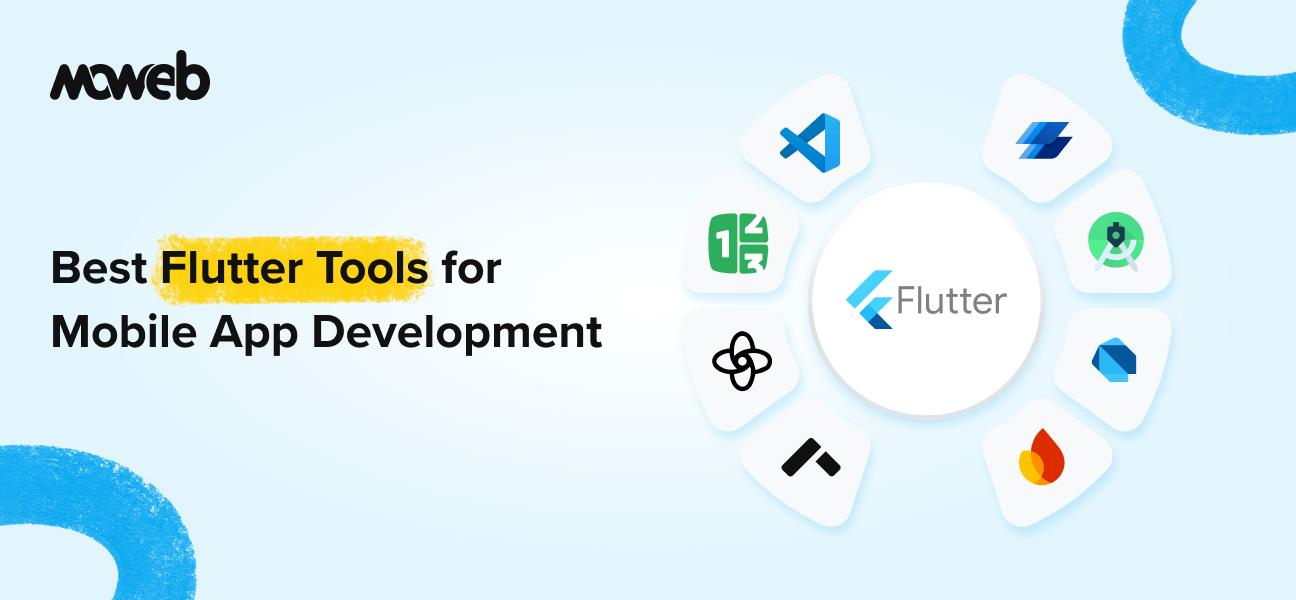
Flutter has solidified its position as a leading cross-platform framework, with its adoption surging among startups and enterprises alike. In 2025, Flutter continues to dominate mobile, web, and desktop development, thanks to its fast rendering engine, extensive widget ecosystem, and seamless integration with modern development tools. With Google’s ongoing enhancements and community-driven innovation, Flutter’s ecosystem is more powerful than ever.
However, as technology evolves, so do the challenges of maintaining scalable, high-performance applications. Developers who stick to outdated methodologies risk falling behind in an industry where efficiency, maintainability, and performance define success. Adopting the latest best practices ensures that Flutter apps remain robust, future-proof, and aligned with the ever-changing technological landscape
This Flutter development best practices guide goes beyond generic development tips—it presents cutting-edge best practices tailored for 2025 and beyond. Whether you’re a seasoned developer or just starting with Flutter, implementing these insights will elevate your app development process to the next level.
Future-Ready Flutter Development Best Practices in 2025
The key to building efficient and scalable Flutter applications lies in adopting the right development strategies. By following best practices, developers can enhance code quality, improve maintainability, and maximize productivity.
Here, you will learn the Flutter development best practices for Flutter developers to improve code quality, readability, maintainability, and productivity. Let’s get cracking:
1. Flutter BLoC Best Practices
State management is the backbone of scalable Flutter applications, and Business Logic Component (BLoC) remains a top choice for organizing and managing state efficiently. By enforcing clear separation of concerns, BLoC ensures that UI components remain lightweight while business logic is handled independently, leading to better testability, scalability, and maintainability.
Why BLoC?
- Stream-based reactive programming enhances predictability and control.
- Supports complex event-driven logic while keeping the UI responsive.
- Scales seamlessly for large, multi-featured applications.
For a deeper dive into implementing BLoC effectively, check out our detailed guide on Flutter BLoC architecture.
2. Adopt Modular Architecture with Micro-Apps
As Flutter applications grow in complexity, maintaining a monolithic structure can hinder scalability and team collaboration. Implementing a micro-app architecture enables teams to break the app into modular components that can be developed and maintained independently.
Tools & Strategies:
- Utilize Dart 3.0+ features for better modularization.
- Use flutter_modular and melos to structure your projects efficiently.
- Ensure each module is reusable and loosely coupled.
3. AI-Driven Development Tools
AI is revolutionizing Flutter App Development Services by automating repetitive tasks and optimizing code efficiency. AI-powered tools can assist developers with debugging, widget generation, and performance enhancements.
Example Use Cases:
- AI assistants like Flutter + Gemini or Amazon CodeWhisperer can automate JSON serialization and suggest optimal widget layouts.
- Predictive debugging can highlight potential performance bottlenecks before runtime.
Read more about essential Flutter development tools.
4. Zero-Boilerplate Code with Codegen
Writing repetitive boilerplate code slows down development and introduces redundancy. Code generation tools help streamline the process and enforce best practices automatically.
Key Tools:
- Freezed – Generate immutable data models effortlessly.
- Build Runner – Automate Dart code generation.
- Dart Macros (Dart 3.3) – Enable structured code generation for better maintainability.
5. Sustainable Code Practices
As digital sustainability becomes a priority in 2025, developers must optimize Flutter apps to minimize their carbon footprint without sacrificing performance. Energy-efficient coding not only benefits the environment but also enhances battery life, speeds up app performance, and can improve app store rankings—as platforms increasingly favor energy-efficient applications.
Best Practices for Sustainable Flutter Development:
- Optimize asset sizes – Compress images, use vector graphics (SVGs), and implement lazy loading to reduce memory usage.
- Minimize widget rebuilds – Efficient state management and optimized widget trees reduce CPU/GPU strain, enhancing battery efficiency.
- Utilize Flutter’s Energy Profiler – Analyze power consumption patterns and optimize background processes for lower energy use.
Studies show that energy-efficient apps rank higher in app stores, as Google Play and the App Store prioritize sustainability in their algorithms. By implementing green coding strategies, developers can not only contribute to a more sustainable future but also gain a competitive edge in app visibility and user retention.
6. Edge Computing Integration
Flutter’s expanding capabilities make it possible to leverage edge computing for real-time processing and offline functionality. By integrating Flutter Wasm (WebAssembly) and edge computing tools, developers can enhance app performance and responsiveness.
Key Tools:
- Hive – Lightweight and fast local database.
- Workmanager – Schedule background tasks efficiently.
Related Post: Flutter Development Tools
7. Ultra-Performance with Impeller+
Flutter’s Impeller rendering engine has redefined how Flutter handles graphics in 2025, delivering ultra-smooth animations, reduced frame drops, and near-instant UI responsiveness. By eliminating Skia’s shader compilation bottlenecks, Impeller ensures that Flutter apps maintain consistent frame rates even on resource-constrained devices.
Best Practices for Peak Performance:
- Use GPU profiling – Leverage tools like Flutter DevTools and Perfetto to analyze rendering performance, detect jank, and fine-tune GPU utilization.
- Minimize shader compilation – Precompile shaders and reduce runtime shader compilation to avoid stuttering during UI interactions.
8. Cross-Platform Superpowers
Flutter’s versatility goes far beyond traditional mobile applications. In 2025, Flutter is a true multi-platform framework, empowering developers to build experiences across foldables, wearables, desktops, and even AR/VR environments. With ongoing advancements in rendering, performance, and platform integrations, Flutter is breaking new ground in cross-device compatibility.
Tools & Platforms:
- Flutter for WebAssembly – Brings near-native performance to web apps, significantly improving execution speed and reducing load times.
- Flutter-Linux – Expands Flutter’s reach to desktop environments, enabling developers to build seamless cross-platform applications.
- Flutter for Foldables & Wearables – Enhanced support for adaptive layouts, ensuring a smooth experience on foldable screens and smartwatches.
- AR/VR with Flutter – Emerging integrations with ARCore, ARKit, and Unity provide exciting opportunities for immersive applications.
9. DevEx (Developer Experience) Optimization
Enhancing the Developer Experience (DevEx) is crucial for improving productivity and reducing technical debt.
Best Practices:
- Automate workflows using Very Good CLI and FlutterFire Codemods.
- Leverage GitHub Copilot for AI-powered coding assistance.
- Hot Reload++ allows near-instant UI updates during development.
10. Security-First Mindset
Security remains a critical concern for Flutter apps, especially those handling sensitive user data. Implementing robust security practices ensures that applications remain protected against evolving threats.
Key Strategies:
- Use Flutter Secure Storage 2.0 for secure credential management.
- Implement runtime encryption to protect data in transit.
- Utilize AppCheck++ to safeguard backend integrations.
- Leverage flutter_rust_bridge for secure native code interactions.
11. Community-Driven Innovation
Flutter’s thriving community is at the heart of its rapid evolution, continuously pushing the boundaries of what’s possible. Open-source contributions, developer collaborations, and beta programs ensure that Flutter remains cutting-edge, adapting to new technologies and industry demands.
By actively engaging with the community, developers not only gain access to early releases and experimental features but also influence the direction of the framework itself.
Key Engagements:
- Explore the Flutter Casual Games Toolkit – Leverage pre-built solutions and best practices for game development.
- Use FlutterFlow 3.0 – A powerful low-code platform enabling faster app prototyping and deployment.
- Join Flutter 2025 Beta Programs – Get exclusive access to upcoming features, provide feedback, and stay ahead of the curve.
Related Post: Why is Flutter a Good Choice for Cross-Platform App Development?
How We Can Help
At Moweb, we don’t just build Flutter apps—we engineer high-performance, future-ready solutions that scale with your business. Our expert developers go beyond generic best practices, leveraging the latest innovations in AI-driven development, modular architecture, and sustainable coding to craft apps that deliver seamless user experiences and unmatched reliability.
Why Partner with Moweb?
Proven Track Record: We’ve delivered high-impact Flutter solutions across industries, helping businesses scale efficiently.
Performance & Security Optimization: Our cutting-edge performance tuning and robust security measures ensure your app runs flawlessly under any conditions.
Next-Gen Development Approach: From AI-powered coding assistants to micro-app architecture, we incorporate the most advanced Flutter strategies to future-proof your application.
End-to-End Support: We don’t just build—we collaborate, optimize, and refine your Flutter applications for long-term success.
Future-Proof Your Flutter App Development Today
By adopting these best practices, you can significantly enhance code quality, reduce maintenance overhead, and future-proof your Flutter applications. From scalable architecture choices like BLoC and micro-apps to AI-driven development tools and sustainable coding practices, these strategies ensure your apps remain efficient, high-performing, and adaptable to emerging technologies.
Why These Best Practices Matter:
Save Time & Costs – Automate repetitive tasks, optimize workflows, and improve collaboration.
Boost Performance & Maintainability – Reduce rendering bottlenecks, optimize state management, and streamline code structure.
Secure & Scalable Development – Implement strong security measures, modularize your app, and leverage edge computing for efficiency.
Stay Ahead: Audit Your Flutter Projects
Want to ensure your Flutter projects are future-ready?
Use this Flutter Best Practices Checklist to audit your code, optimize workflows, and integrate the latest advancements in the Flutter ecosystem.
Related Post: Flutter vs. Swift: Which is Best for iOS App Development?
What’s Next? Emerging Trends to Watch in Flutter App Development
Quantum Computing Readiness – Preparing Flutter apps for post-quantum cryptography and high-performance computing.
Neural Rendering & AI-Powered UI/UX – Advanced AI-driven interfaces that dynamically adapt to user behavior.
5G-Optimized & Cloud-Native Flutter Apps – Enhanced app responsiveness and seamless cloud integration for real-time experiences.
FAQs
Why is modular architecture critical for Flutter apps in 2025?
As Flutter apps grow in complexity, modular architecture ensures scalability, maintainability, and better team collaboration. By breaking the app into independent micro-apps, developers can reuse components, streamline updates, and reduce technical debt, making large projects more manageable.
How can AI improve Flutter development workflows?
AI-powered tools like Gemini, CodeWhisperer, and GitHub Copilot automate repetitive tasks, generate optimized code, suggest UI layouts, and improve debugging efficiency. AI-driven performance analysis can also identify bottlenecks early, speeding up development while maintaining high code quality.
Can Flutter apps really be “sustainable”?
Yes! Sustainable development practices in Flutter focus on optimizing energy consumption, reducing memory overhead, and minimizing unnecessary UI rebuilds. Tools like Flutter’s Energy Profiler help measure and improve efficiency, leading to lower carbon footprints and better app store rankings.
How do I stay updated with Flutter 2025 trends?
To stay ahead, follow Flutter’s official channels, join beta programs, and engage with the open-source community. Platforms like FlutterFlow 3.0, Flutter Casual Games Toolkit, and developer conferences offer early access to emerging tools and frameworks.
Can Flutter target AR/VR or wearables in 2025?
Absolutely! Flutter 3.x has expanded support for foldables, wearables, AR/VR, and WebAssembly. Developers can leverage Flutter for WebAssembly, Flutter-Linux, and platform-specific SDKs to build immersive cross-platform experiences for next-gen devices.
What’s the best way to secure Flutter apps in 2025?
Security-first development is key. Implement Flutter Secure Storage 2.0, runtime encryption, and AppCheck++ to safeguard user data. For secure native integrations, use flutter_rust_bridge to add low-level security layers and prevent vulnerabilities.
What’s the future of Flutter for enterprise apps?
Flutter is rapidly becoming a go-to framework for enterprise-grade applications. With AI-driven optimizations, seamless cross-platform support, and powerful integration capabilities, enterprises can build scalable, high-performance apps while reducing development costs and time-to-market.
Found this post insightful? Don’t forget to share it with your network!





